How to store onions properly?
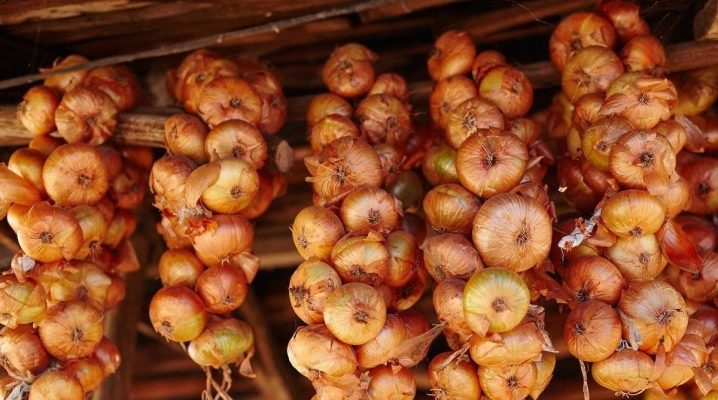
It is difficult to imagine a full-fledged cooking without onions, which is why it is necessarily grown in the garden, eaten in season and stored until the next. True, it is not always possible to stock up on onions so that it does not deteriorate and does not end ahead of schedule. This is not the most tricky thing, but it certainly does not hurt to study it.
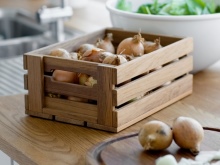
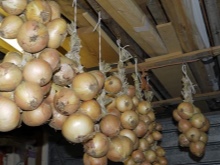
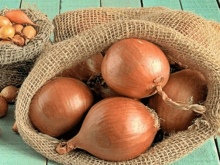
Preparation
Onions growing on the site must be ripe. This takes 3 to 4 months (depending on the variety). Bulbs are usually harvested in August, closer to the middle of the month.
How to understand that the bulbs are ripe: their feathers should dry out, and the husks should become dense. After that, the crop is dug up and dried. If the weather is hot and dry, they are simply left in the garden for a week or a little less, turning the roots over from time to time. The sun, by the way, helps to deal with pathogens that may remain on the surface of the bulbs. If the weather is unlucky, it is rainy and damp, the onions are folded under a canopy on a shell net. You can simply place it in a well-ventilated area.
Everything seems clear with cleaning and drying, but this is only the first part of the preparatory work. When the onion feathers are completely dry, and the neck becomes thin, the onion itself is in a golden husk, you can cook it further. It is necessary to cut the neck, leaving about 5 centimeters, and then remove the roots.
If the fruits are subsequently woven into braids, the feathers may not be trimmed.

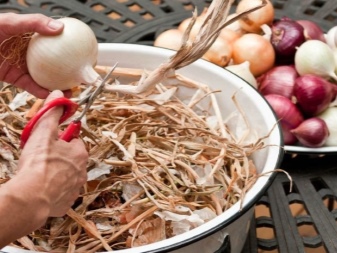
The next stage is the sorting of root crops. They need to be calibrated, to remove all damaged and deformed. But you don't have to throw them away, you can eat them right now or cut them up to add to pickles and marinades. But it is better to remove diseased bulbs immediately.
By the way, not all onion varieties are suitable for long-term storage. Later cultures are more suitable in this sense. They are stored quietly until the end of spring. Yellow bulbs are also considered to be the best long-livers, while red and white bulbs are less stored. White ones spoil quickly, it is almost impossible to prepare them for months of storage.
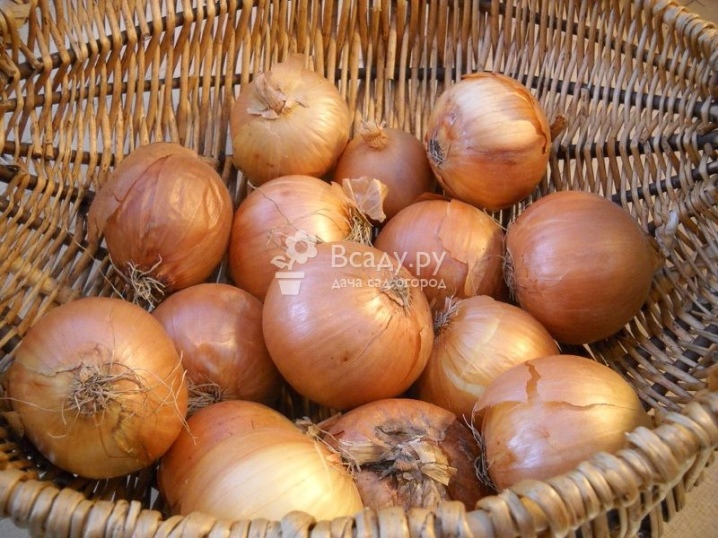
The necessary conditions
If the crop is not stored in the right conditions, it will die. More precisely, it will deteriorate ahead of time. The main criterion for choosing a storage location is dryness. Moisture kills the bulbs more than anything else. And because of moisture, the culture is sick.
In addition to dryness, onions are required:
- airing;
- no heat source nearby;
- the absence of an unfriendly neighborhood (you should not store onions next to potatoes, beets and carrots);
- darkening.

By the way, only onions peeled from the ground are stored. It seems so obvious, but beginners may reason that, like carrots with beets, the onions do not need to be peeled. But this will be the first step towards the destruction of the crop.
There are a lot of ways to store onions, and there are also many forms where it could be conveniently placed. Onions are stored in stockings and linen bags, containers and paper boxes. That is, those who do not have a basement, a cellar, a summer residence, those who are forced to store their crops strictly at home, will also not be left without their convenient stock option.
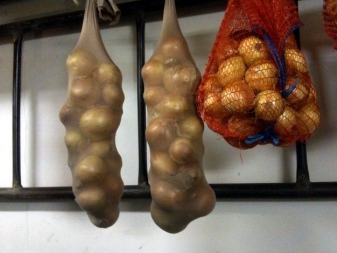
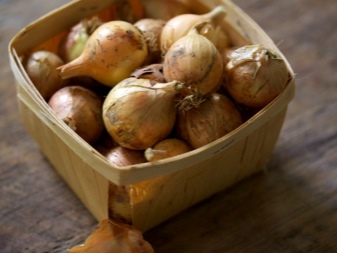
Overview of methods
It should be noted that storage methods are often in the nature of family continuity. Whoever did it in the family continues: daughters repeat the experience of mothers and grandmothers, etc. And they may not even suspect that there are much more storage methods, and in each specific case they may be even more convenient.

In the fridge and freezer
The cold method is storing onions at zero or low temperatures (-3 degrees). At such temperatures, the crop is not threatened with rot, but the pulp of the fruit will not freeze, which is very convenient. And although many do not believe that onions will not freeze, this has been proven many times - the husk protects the pulp from freezing. You can reach this temperature in the refrigerator, so you can send onions there for the winter. But it seems that a glazed balcony is better suited for these purposes. If only because there is more space.
And you can also be critical of the refrigerator because the usual temperature there is on average +5 degrees. And for the bulbs this is not the best option - moisture forms on the surface of the fruit, and for this culture, as already mentioned, it is a faithful companion of decay. Therefore, if it is already stored, it is better in the freezer: from two months to six months, the crop can lie there. One problem is not enough space.
Nevertheless, onions are usually stored in the freezer in a different way: they are chopped in advance and packed in zip bags or containers. You can even make mashed potatoes from onions, which can then be conveniently added to cutlets and many other dishes.


At room temperature
This method is called warm and is used, perhaps, more often than others. At home, the temperature is often kept within plus 18-22 degrees. In this case, the humidity in the apartment should be 60-70%. Therefore, the fruits are placed on the mezzanine, for example, on an insulated loggia, and very often they are stored in containers under the bed.
Since the bow tied in braids is very decorative, and even a bow in tights can look pretty, the owners decide to hang it in the kitchen, right on the walls. Yes, such a rustic cozy atmosphere is quite charming, only the heat from the heating devices negatively affects the safety of the onion. It is likely that in such conditions he will not survive until spring.
Perhaps the need to store onions will be the motivation to finally unload the mezzanines and make them an onion storage. It is very convenient: it is dark, dry, and out of sight.
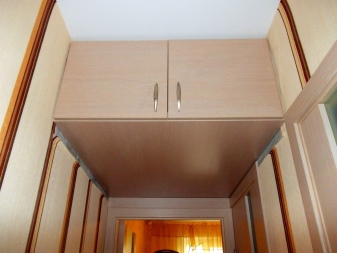
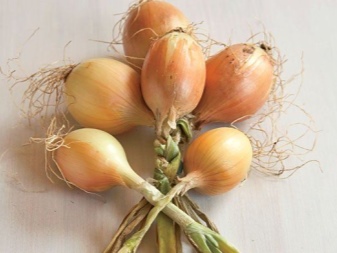
On the balcony
If the balcony is not insulated, but glazed, the bow is usually stored there. And there is enough space, and the temperature is normal, and you can ventilate. It is more convenient to do this in containers, on racks - to save space. In addition, storage looks more aesthetically pleasing this way. Simply spreading it out on the floor is not the best option.
And it is also important that the onions are not stored along with the potatoes: although the latter should not be on the cold balcony anyway.
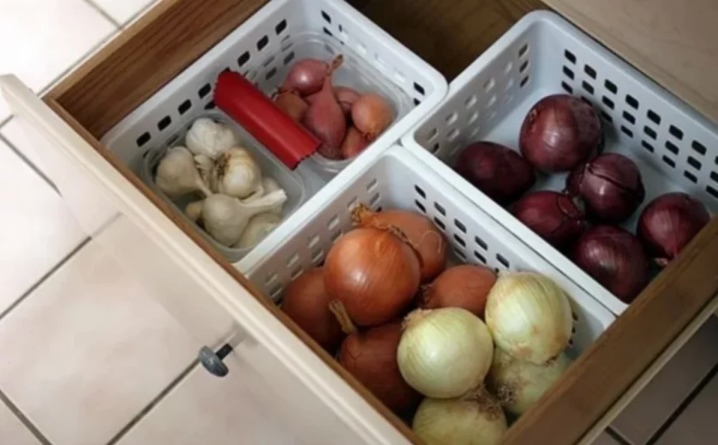
In the pantry
Again, if all the basic conditions and requirements are met, if it is dark, dry, there is enough space, the pantry is a convenient option. But only if the neighbors unwanted for this plant are not stored there. Boxes and cardboard boxes are fine for storage, but paper bags or linen bags can also be used.
The shelf life of a standard onion is until the end of spring, and in the pantry, it may well "live" up to that time.
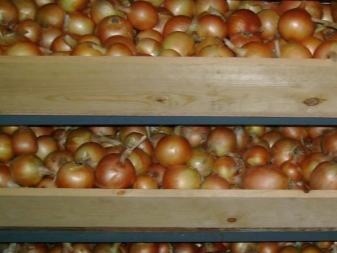
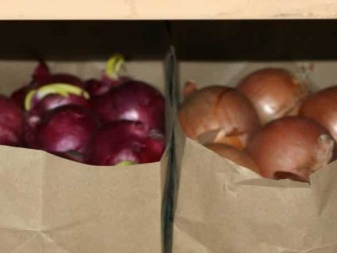
In the basement and cellar
It is logical that you want to send the fresh harvest there, so as not to overload the living space with onion heads. But if these rooms are damp and humid, they are definitely not suitable. If everything is tolerable, you can additionally process the walls and floor with lime or chalk. You can simply place lime in the corners along the walls - lime absorbs moisture perfectly. But this is under the conditions that there is not so much moisture. If water often accumulates in the basement, it is definitely impossible to store onions there.
With crushed chalk, they do this: a pound of powder per 10 kg of onion, evenly process (dust) each fruit, without making the layer of chalk very thick. During storage, the powder will absorb excess moisture, which will prevent the onion from getting sick.
And in the basement and cellar, canned onions are often stored: the method is not the most obvious, but worthy of attention. It can be simply marinated, and then it will become a spicy ingredient for a huge number of dishes.
Red onions, for example, can be perfectly preserved in balsamic vinegar, it is not even necessary to do this with a cut head, you can harvest it whole.

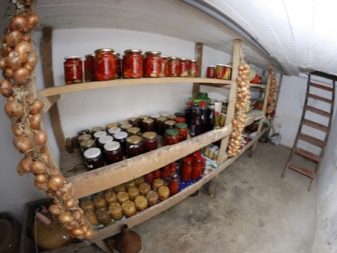
What if the onion rots during storage?
No one is happy if the onion is cut, but from the inside it has deteriorated, rotted. And the reasons for this may be different.
Why does the onion rot:
- diseases - usually of fungal or bacterial origin, signs of ailment in onions appear precisely during storage;
- high humidity in the room - this does not need to be explained, the onion does not tolerate it;
- improper packaging - for example, it will not be possible to keep the bulbs in polyethylene for a long time;
- excess nitrogen fertilizers - if at the stage of growth the plant was treated with them excessively, the harvest was probably quick and voluminous, but with subsequent storage there may be problems, and it is early decay that is the main one.
So that the onion does not start to rot, one should prevent a possible pathology, not create conditions for its development.
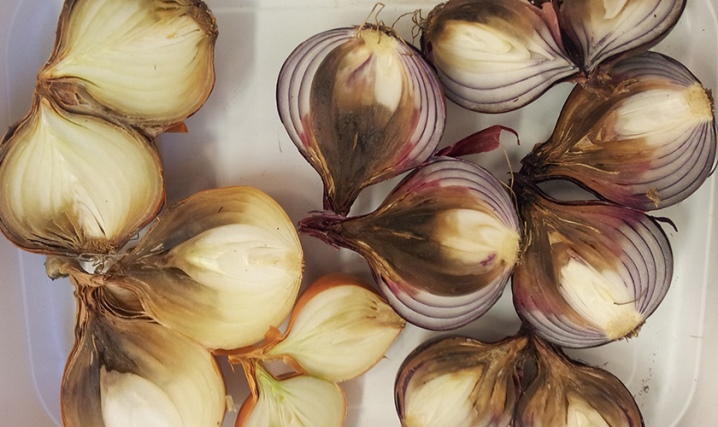
Rotting can be prevented in the following ways:
- even in spring, during planting, the planting material is treated with a manganese solution ahead of time;
- use dressings moderately, choose the right formulations (for example, onions like potash), this will strengthen the plant even at the growth stage;
- carefully harvest the crop - it can be damaged by hand, cut off with a non-sterile tool, hence the disease and the weakness of the fruit;
- high-quality drying - if the onion is not completely dried, it will definitely start to rot;
- drying and disinfection of the room where the crop will be stored, there are often flowers on the same balcony in summer and autumn, and, possibly, the soil in them is contaminated;
- organization of normal ventilation;
- periodic inspection of the bulbs in order to understand if they are in normal form or there is a rejection.

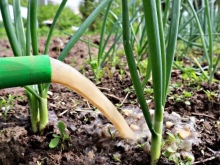
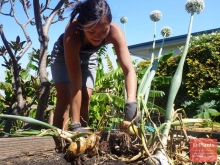
By the way, you shouldn't give up modern inventions. For example, in gardening markets today it is not a problem to find special containers for storing onions. They can be stored on the balcony, in the closet, even in the kitchen (if there is no other place). They look aesthetically pleasing, the bow is in order there, it is convenient to get it, nothing falls out. Such containers have holes for ventilation, in a word, all conditions are met.
You can store onions in wicker baskets, in metal ones - it also looks beautiful. In the baskets, due to their very design, there is a priori ventilation. Someone believes that it is correct to store onions in wooden boxes, and this is true. You can even split the boxes into divisions to sort the vegetables.
Any method is good, the main thing is to properly prepare the bulbs and observe the basic storage conditions.
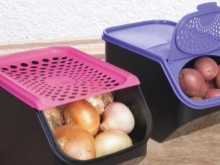
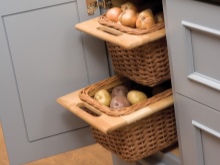














The comment was sent successfully.